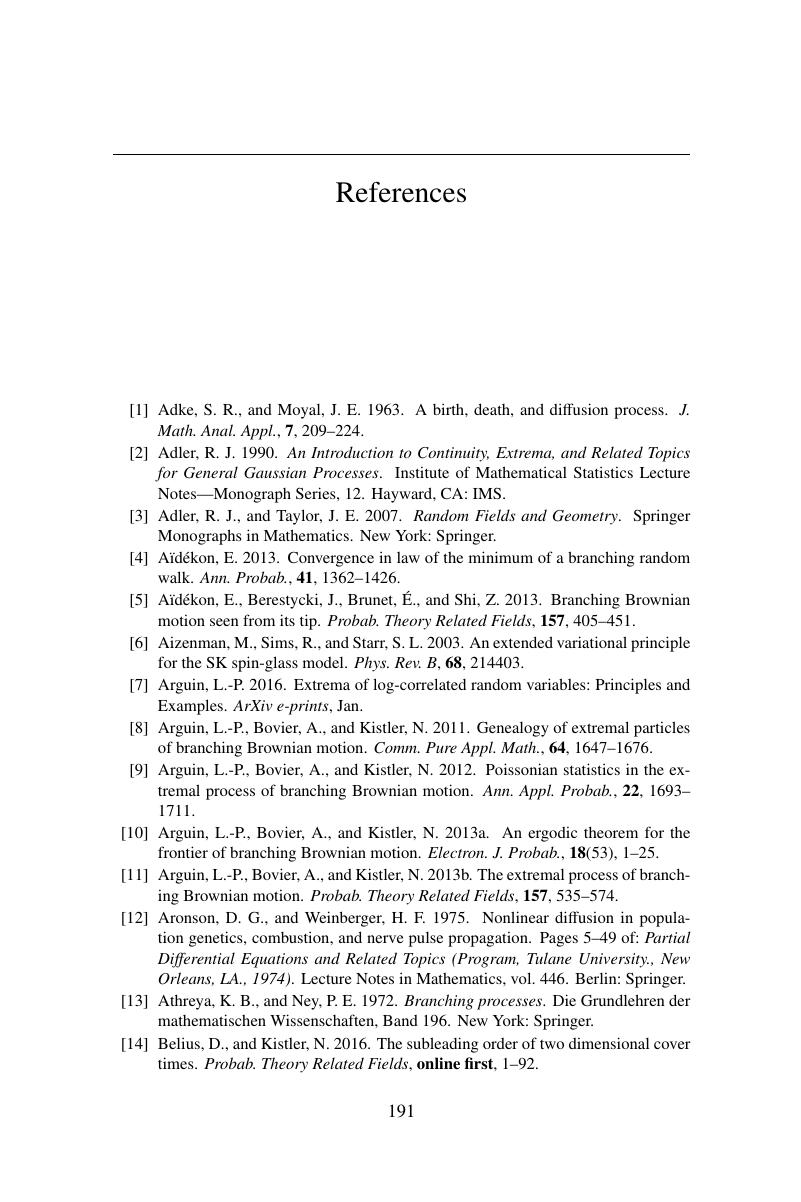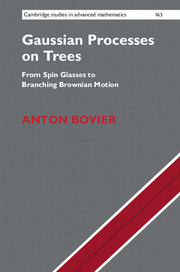Book contents
- Frontmatter
- Contents
- Preface
- Acknowledgements
- 1 Extreme Value Theory for iid Sequences
- 2 Extremal Processes
- 3 Normal Sequences
- 4 Spin Glasses
- 5 Branching Brownian Motion
- 6 Bramson's Analysis of the F-KPP Equation
- 7 The Extremal Process of BBM
- 8 Full Extremal Process
- 9 Variable Speed BBM
- References
- Index
- References
References
Published online by Cambridge University Press: 17 November 2016
- Frontmatter
- Contents
- Preface
- Acknowledgements
- 1 Extreme Value Theory for iid Sequences
- 2 Extremal Processes
- 3 Normal Sequences
- 4 Spin Glasses
- 5 Branching Brownian Motion
- 6 Bramson's Analysis of the F-KPP Equation
- 7 The Extremal Process of BBM
- 8 Full Extremal Process
- 9 Variable Speed BBM
- References
- Index
- References
Summary

- Type
- Chapter
- Information
- Gaussian Processes on TreesFrom Spin Glasses to Branching Brownian Motion, pp. 191 - 198Publisher: Cambridge University PressPrint publication year: 2016



